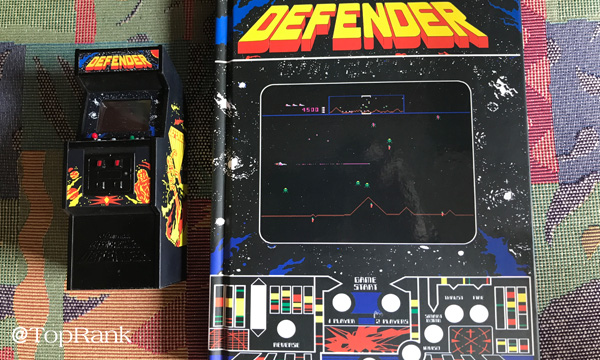Amid the COVID-19 crisis, marketing organizations are having to find ways to engage with their customers and prospects without the use of in-person seminars, workshops, and conferences.
Digital channels and technology have one answer: webinars. These online events only require Internet access, a device for viewing, and a video conferencing service provider. Because of this, many companies have already repurposed their physical conferences into a webinar format.
But before you send out the invitations, here are nine best practices my team uses when we create webinars. As online and mobile digital channels grow as the preferred places to congregate, My hope is that you find these valuable as you look to further utilize webinars in your marketing efforts.

1. Compile a webinar team
Although it’s become a key marketing tactic, not everyone in your marketing team should be involved in overseeing a given webinar. Otherwise, there are “too many chefs in the kitchen.” Only include those who have a specific role to play to ensure success.
You will need a facilitator to develop content, find speakers, and promote the event. The webinar team should also consist of presenters or subject matter experts. Finally, the team should include “webinar assistants” who can handle the technical (audio/visual) aspects.
2. Pick a webinar format
There are many ways to design a webinar. The format you select should best match your content and purpose. For example, if you’re taking a conference or seminar from its physical format to a digital format, then you can try to mirror that structure in your webinar. This includes considering audience size, content scope, and number of speakers.
There are many formats to consider, including a single speaker, moderated panel discussion, and interview style. Each format can include audience Q&A similar to how you would have designed it for an in-person event.
3. Develop content and visuals
Although your speakers can capture an audience’s attention with their personalities, stage presence, and thought leadership, more is needed during a webinar to hold onto an audience. That means deciding on the content and visuals to accompany the webinar presentation.
And, by visuals, I don’t mean text-filled PowerPoint slides offered through screen sharing capability. Instead, consider vivid pictures that enhance your presentation along with relevant video clips. Consider embedding audience polling capabilities. Ask questions and share the results.
4. Research and test available webinar service providers
Partnering with a webinar service provider can make the difference in how your viewers see and hear (and remember) your webinar. There are numerous solutions to take for a trial run to see what works for the size and scope of your webinar. Some examples include Zoom, WebEx, GoToMeeting, and ClickMeeting.
Factors to consider include the features offered. Do they match your format and purpose? Are they easy for you to use? Can they support the number of video participants and viewers you expect? Of course, the cost is also a factor because any tool has to fit within your budget.
5. Plan for logistics and technical components
It’s important to find a suitable place to broadcast the webinar. Since you and your guests will be on camera (most likely joining from a variety of locations these days), the surroundings should be quiet and free of disruptions.
Prior to any live broadcast, you must conduct at least one trial run to make sure the audio, video, lighting, and visuals work. If you have speakers joining from different locations, do a test video conference to ensure each person can be seen and heard.
Having technical issues during the webinar will cause viewers to disconnect. Run-throughs can help pinpoint anything that needs to be fixed prior to going live. And, if this is your team’s first webinar, do multiple trial runs to help everyone get comfortable with how it works.
6. Promote the webinar
To get the most out of moving these marketing tactics online, promote the webinar across all channels in a consistent way. Promotion ideas include a descriptive landing page, a banner ad on your website, social media posts and targeted social ads, leveraging your participants’ networks, and an email campaign.
Your promotional content should focus on the benefits your audience will receive if they participate. The content should also contain links that lead the potential participant to the registration form and the webinar link. Making it as easy as possible can strengthen your promotion results. Reminder emails and calendar invites also come in handy to make sure participants remember when the webinar is.
7. Consider the audience when scheduling the event
Think about where your audience will be when you schedule the date and time. Attendees may be spread across the United States or globally. While you can’t accommodate everyone’s preferences, you can find a midway point that serves the largest segment of your audience. Use your existing data for your audience, including their location, to plan this aspect of your webinar.
8. Follow up with webinar attendees
One of the most neglected opportunities is the follow-up. This is an ideal time to continue engaging with attendees who might also be prospects and customers.
My team sends out thank-you emails and solicits participants’ feedback with a link to a brief survey. This same email also contains a link to the webinar recording and additional resources. This includes subscribing to our blog, newsletter, and/or any additional related content that builds on what they learned during the webinar. We also offer the chance to join a mailing list so they can find out about upcoming webinar events or receive information that helps them with a specific pain point.
9. Assess and improve
Soliciting feedback from attendees is just one of the ways we assess our webinars. We also look at engagement in terms of the number of questions, dropped views, and no-shows.
Our assessment also includes asking participants and speakers how they felt about the experience. This information helps us plan and execute even better webinars in the future.
Find out more about creating webinars by learning “How to Quickly and Easily Connect Oracle Eloqua to Zoom.”

from Oracle Blogs | Oracle Marketing Cloud https://ift.tt/2X6qd4R
via
IFTTT


 Pandemic hastens shift in ad buying to mobile, study says During an overall drop in ad spending, mobile ad spend has fared the best, as its 15 percent decrease was less than the 25 percent seen for desktop ad buying, according to recently-released study data.
Pandemic hastens shift in ad buying to mobile, study says During an overall drop in ad spending, mobile ad spend has fared the best, as its 15 percent decrease was less than the 25 percent seen for desktop ad buying, according to recently-released study data.  A lighthearted look at “the new normal” by Marketoonist Tom Fishburne —
A lighthearted look at “the new normal” by Marketoonist Tom Fishburne — 
 In this episode of the
In this episode of the  This episode of the Duct Tape Marketing Podcast is brought to you by
This episode of the Duct Tape Marketing Podcast is brought to you by 

 In this episode of the
In this episode of the 

 Photo by Author[/caption] Williams Electronics’ Defender is my all-time favorite stand-up video arcade game, an insidiously difficult side-scrolling spaceship-protecting-the-world shooting match juggernaut from 1981 programmed by early video game legend Eugene Jarvis. I played Defender so much that I eventually won a local video game competition, and can still almost feel where I had callouses on my hands from hour upon hour of game-play long ago. Defender teaches marketers the importance of
Photo by Author[/caption] Williams Electronics’ Defender is my all-time favorite stand-up video arcade game, an insidiously difficult side-scrolling spaceship-protecting-the-world shooting match juggernaut from 1981 programmed by early video game legend Eugene Jarvis. I played Defender so much that I eventually won a local video game competition, and can still almost feel where I had callouses on my hands from hour upon hour of game-play long ago. Defender teaches marketers the importance of